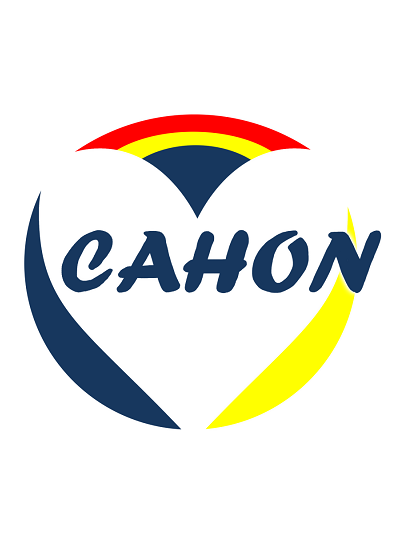BCMA/GPRC5D bispecific CAR T-cell therapy for relapsed/refractory multiple myeloma with extramedullary disease: a single-center, single-arm, phase 1 trial.
IF 29.5
1区 医学
Q1 HEMATOLOGY
引用次数: 0
Abstract
Relapsed/refractory multiple myeloma (RRMM) with extramedullary disease (EMD) represents a challenging condition, with limited treatment options and poor prognosis. We conducted a phase 1 clinical trial to evaluate the safety and effectiveness of a novel bispecific chimeric antigen receptor (CAR) T-cell therapy targeting two antigens, B-cell maturation antigen and G protein-coupled receptor class C group 5 member D (BCMA/GPRC5D), in this high-risk population. A total of 12 patients were enrolled, of whom 3 were excluded due to disease progression or death before CAR T-cell infusion, despite meeting the inclusion criteria, leaving 9 for analysis. The median follow-up was 6.08 months (Interquartile Range [IQR]: 0.9-16.5). All patients received BCMA/GPRC5D bispecific CAR T-cell therapy after bridging therapy with localized radiotherapy or Elranatamab. Efficacy assessments revealed that 100% of patients achieved partial response (PR) or better, with 44.4% achieving complete response (CR). Common adverse events included hematological toxicities such as anemia, leukopenia, and thrombocytopenia. Cytokine release syndrome (CRS) occurred in 66.7% of patients, all of which were grade 1-2, and no neurotoxicity (ICANS) was observed. The 1-year overall survival (OS) and progression-free survival (PFS) rates were 60% and 63%, respectively. Median OS and PFS were not reached. Collectively, these findings highlight a potential therapeutic strategy involving BCMA/GPRC5D dual-targeted CAR T-cell therapy for patients with aggressive forms of multiple myeloma, particularly those with extramedullary disease, and support the need for further exploration and validation in larger, multi-center clinical studies.BCMA/GPRC5D双特异性CAR - t细胞治疗复发/难治性多发性骨髓瘤伴髓外疾病:单中心、单臂、1期试验
复发/难治性多发性骨髓瘤(RRMM)合并髓外疾病(EMD)是一种具有挑战性的疾病,治疗选择有限,预后差。我们进行了一项i期临床试验,以评估一种新的双特异性嵌合抗原受体(CAR) t细胞治疗在高危人群中的安全性和有效性,靶向两种抗原,b细胞成熟抗原和G蛋白偶联受体C类5成员D (BCMA/GPRC5D)。共纳入12例患者,其中3例因CAR - t细胞输注前的疾病进展或死亡而被排除,尽管符合纳入标准,留下9例进行分析。中位随访时间为6.08个月(四分位间距[IQR]: 0.9-16.5)。所有患者在局部放疗或Elranatamab桥接治疗后均接受BCMA/GPRC5D双特异性CAR - t细胞治疗。疗效评估显示,100%的患者达到部分缓解(PR)或更好,44.4%达到完全缓解(CR)。常见的不良事件包括血液学毒性,如贫血、白细胞减少和血小板减少。66.7%的患者发生细胞因子释放综合征(CRS),均为1-2级,未观察到神经毒性(ICANS)。1年总生存率(OS)和无进展生存率(PFS)分别为60%和63%。中位OS和PFS均未达到。总的来说,这些发现强调了一种潜在的治疗策略,包括BCMA/GPRC5D双靶向CAR -t细胞治疗侵袭性多发性骨髓瘤患者,特别是髓外疾病患者,并支持在更大的多中心临床研究中进一步探索和验证。
本文章由计算机程序翻译,如有差异,请以英文原文为准。
求助全文
约1分钟内获得全文
求助全文
来源期刊
CiteScore
48.10
自引率
2.10%
发文量
169
审稿时长
6-12 weeks
期刊介绍:
The Journal of Hematology & Oncology, an open-access journal, publishes high-quality research covering all aspects of hematology and oncology, including reviews and research highlights on "hot topics" by leading experts.
Given the close relationship and rapid evolution of hematology and oncology, the journal aims to meet the demand for a dedicated platform for publishing discoveries from both fields. It serves as an international platform for sharing laboratory and clinical findings among laboratory scientists, physician scientists, hematologists, and oncologists in an open-access format. With a rapid turnaround time from submission to publication, the journal facilitates real-time sharing of knowledge and new successes.

 求助内容:
求助内容: 应助结果提醒方式:
应助结果提醒方式:


